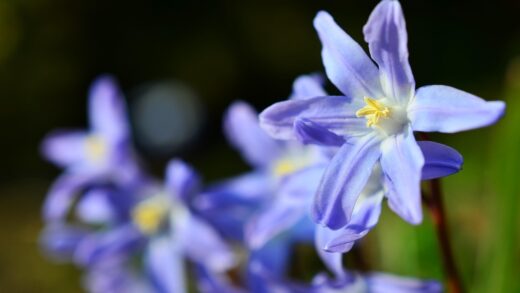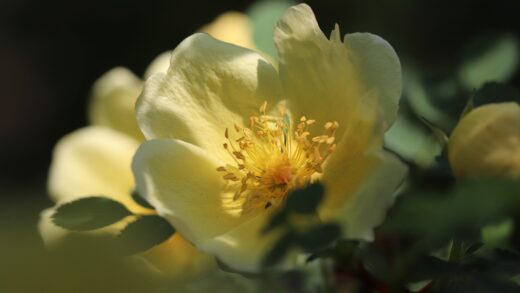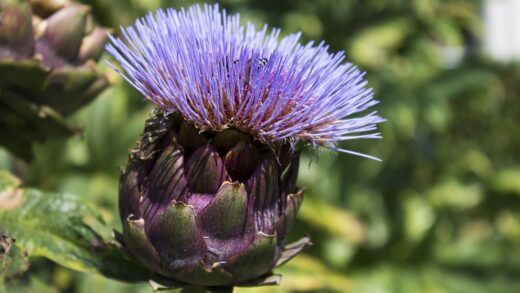The breathtaking floral display of the Japanese ornamental cherry is a direct result of the energy it captures from the sun, making light exposure one of the most critical factors for its successful cultivation. These trees are true sun-worshippers, and their health, vigor, and, most importantly, their ability to produce a profusion of blossoms are intrinsically linked to the amount of direct sunlight they receive each day. Understanding and providing for their light requirements is not just a suggestion for good growth; it is the fundamental prerequisite for achieving the spectacular spring spectacle for which these trees are so revered.
To thrive and perform at its best, a Japanese ornamental cherry requires a location that receives full sun. In horticultural terms, “full sun” is defined as a site that gets a minimum of six to eight hours of direct, unfiltered sunlight per day during the growing season. This ample exposure to sunlight fuels the process of photosynthesis, where the tree converts light energy into the chemical energy it needs to grow, develop strong branches, build a dense canopy, and, crucially, form the thousands of flower buds that will erupt in the spring.
The quantity and quality of flowering are directly proportional to the amount of sunlight the tree receives. A tree situated in a prime, sunny location will be covered in a dense blanket of blossoms, creating a powerful visual impact. In contrast, a tree planted in a location with partial shade will likely have a much sparser bloom, with flowers concentrated on the parts of the canopy that receive the most sun. The overall form of the tree can also be affected, as it may become leggy and stretched, with branches reaching out in an attempt to find more light.
While full sun is the ideal, some ornamental cherry cultivars may tolerate a small amount of partial shade, particularly in climates with very hot and intense afternoon sun. In these regions, a location that provides direct morning sun and some light, dappled shade during the hottest part of the afternoon can help reduce heat stress and prevent leaf scorch. However, it is a delicate balance; too much shade will invariably lead to a compromise in the tree’s flowering performance and overall density.
Ultimately, when selecting a planting site for a Japanese ornamental cherry, prioritizing sunlight is paramount. Observe the proposed location throughout a full day to accurately gauge how many hours of direct sun it receives. Sacrificing ideal light conditions for a more convenient location is a compromise that will be evident every spring in the quality of the bloom. Providing the abundant sunlight these trees crave is the single most important investment you can make in their future beauty.
More articles on this topic
The importance of full sun
The requirement for full sun is rooted in the fundamental biology of the Japanese ornamental cherry. Photosynthesis, the process by which plants create their food, is driven by light. The leaves act as solar panels, and the more direct sunlight they can absorb, the more energy the tree can produce. This energy is stored as carbohydrates and used to fuel all of the tree’s life processes, from the growth of roots and leaves to defending itself against pests and diseases.
Abundant energy production is especially critical for flowering. The formation of flower buds is an energy-intensive process that the tree undertakes in the summer and autumn, long before the blooms actually appear. A tree that has spent the growing season basking in full sun will have accumulated a large surplus of energy, which it can then invest in creating a massive number of flower buds for the following spring. This is why a sunny summer often leads to a more spectacular spring bloom.
Sunlight also plays a crucial role in the development of a strong and aesthetically pleasing tree structure. In a sunny location, the tree receives light evenly from all sides, encouraging a balanced, symmetrical growth habit. In contrast, a tree that is shaded on one side will tend to grow disproportionately towards the light source, resulting in a lopsided and potentially weaker structure. Full sun exposure helps to develop a dense, full canopy and strong branches that can support the weight of the blossoms.
Beyond flowering and structure, adequate sunlight is vital for the tree’s overall health and resilience. A sun-drenched canopy allows for good air circulation, which helps the leaves to dry quickly after rain or dew. This rapid drying creates an environment that is less hospitable to the fungal pathogens that cause diseases like leaf spot and brown rot. A vigorous, well-fed tree growing in full sun is simply better equipped to withstand and recover from the stresses of pests, diseases, and adverse weather conditions.
More articles on this topic
Consequences of inadequate light
Planting a Japanese ornamental cherry in a location with insufficient light will lead to a cascade of negative consequences that compromise its health and beauty. The most immediate and noticeable effect will be on its flowering. A tree struggling in the shade will produce significantly fewer flower buds, resulting in a sparse and lackluster display. The flowers that do appear may be smaller, less vibrant, and concentrated only on the tips of the branches that manage to catch the most light.
The tree’s growth habit will also be negatively impacted. In a process known as etiolation, the tree will stretch its branches and grow in a thin, elongated, or “leggy” manner as it reaches for a light source. This results in a weak, spindly structure with large gaps between the leaves, a stark contrast to the dense, full canopy of a healthy tree. The foliage itself may be a paler shade of green due to lower levels of chlorophyll production, further reducing the tree’s photosynthetic capacity.
A lack of sunlight also makes the tree more susceptible to a variety of health problems. The perpetually damp conditions in a shady, poorly ventilated location are ideal for the development of fungal diseases. Powdery mildew, in particular, thrives in such environments. The overall stress and weakness caused by insufficient energy production also lower the tree’s natural defenses, making it an easier target for opportunistic insect pests and diseases.
Over time, a Japanese ornamental cherry that is chronically light-deprived will enter a state of gradual decline. It will fail to thrive, showing little new growth each year and becoming progressively weaker. Eventually, it may succumb to secondary problems brought on by its weakened state. This highlights the fact that full sun is not merely a preference for these trees, but a fundamental requirement for their long-term survival and success in the landscape.
Site selection and light assessment
Choosing the right planting location is the most important decision you will make for your ornamental cherry, and a thorough light assessment is a non-negotiable part of this process. Before you even purchase a tree, you must spend time observing the potential planting spot. The path of the sun changes with the seasons, so it is important to consider the light conditions during the main growing season, from spring through autumn.
To perform an accurate assessment, check the site at several different times throughout a sunny day. Note when the area first receives direct sunlight in the morning and when it finally falls into shadow in the evening. Tally the total number of hours of direct, unobstructed sunlight. Be mindful of shadows cast by buildings, large evergreen trees, or other structures. A spot that seems sunny in the morning might be in deep shade by the afternoon.
Remember to account for the future growth of both your ornamental cherry and any surrounding vegetation. A small, newly planted tree nearby could grow to cast a significant shadow in a few years’ time. Similarly, consider the mature size of the cherry cultivar you plan to plant. Ensure it will have enough space to grow to its full size without being crowded or shaded out by neighboring plants or structures.
If your garden does not have a location that provides the ideal six to eight hours of full sun, it may be better to choose a different type of plant that is adapted to shadier conditions rather than trying to force an ornamental cherry to grow in an unsuitable spot. While it can be tempting to try, the inevitable result will be a constant struggle and a disappointing performance from the tree. Respecting the plant’s fundamental needs is the first rule of successful gardening.
Light, climate, and regional considerations
While the general rule is “full sun,” there can be some nuances depending on your specific climate. In cooler, more northern climates with less intense summer sun, providing the absolute maximum number of sun hours possible is crucial. In these regions, a south-facing location that is free from any overhead shade is the undisputed best choice to ensure the tree can gather enough energy during the shorter growing season.
Conversely, in very hot, southern climates with scorching summer heat and intense solar radiation, a small amount of protection from the harshest afternoon sun can sometimes be beneficial. A location that receives full sun from the morning until the early afternoon, but then gets some light, filtered shade during the peak heat of the late afternoon, can help prevent issues like leaf scorch and reduce overall heat and water stress on the tree. However, this shade must be very light and dappled, not the deep shade cast by a building or a dense evergreen.
The presence of reflective surfaces near the tree can also influence its light environment. A tree planted near a south-facing white wall will receive not only direct sun from above but also a significant amount of reflected light and heat. While this can be beneficial in cooler climates, it can exacerbate heat stress in hotter zones. It is a factor to consider when evaluating the overall microclimate of the planting site.
Ultimately, the goal is to find the “sweet spot” for your specific location. For the vast majority of climates, this means a straightforward full-sun position. The key is to provide the tree with enough light to photosynthesize efficiently and build up the energy reserves needed for a spectacular bloom, without subjecting it to excessive heat stress that could damage its foliage. Careful observation of your own garden’s unique conditions is the best guide.


















